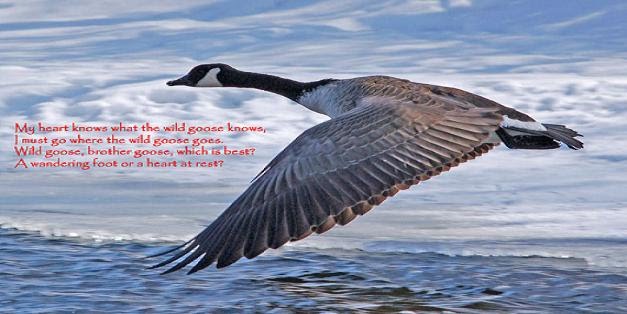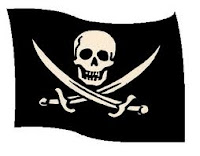There
are two things that excite the soul-Infinity and Finity. On an island you have
both.
 |
| Bar at Pete's Pub |
Those were the words of Randolph Johnston-
artist, sculpture and philosopher-after he sailed to the Bahamas in 1951. We
first discovered the incredible art of Randolph Johnston in Little Harbor where
he and his family settled. Inside the harbor just beyond the sandy beach is
Pete’s Pub, a wild and raucous outdoor bar that looks like it’s made of
driftwood held together with boat lines. Hanging from the rafters are colorful
burgees and flags, old license plates including one from Texas that says ‘Go
Play’, t-shirts, bras, lacy panties and the names of hyndreds of people
who have had the pleasure of playing and drinking in this fun place. Pete is
the son of Randolph Johnston and has lived most of his life on this little spit.
 |
| Southern entrance into the bay |
Little
Harbor is a small, protected harbor located on the southeastern end of Great
Abaco Island in the chain of Bahamas Islands called the Abacos. The harbor is tiny
and you may have to wait for a rising tide for the boat to clear the low water
shoal at the entrance.
It
was a gloriously sunny Sunday morning, about 72°,
and I sat inside an abandoned wooden dinghy in front of Pete’s Pub just
watching the comings and goings of the boaters in the harbor.
“How
about a bowl of Seafood Chowder for breakfast?” Pete shouted to me from the bar.
“Besides, I could also use some help seasoning this meat and getting it into the
pit.” I crawled out of the old dinghy and figured I’d just have to work for
my breakfast.
 |
| Headache in a glass! |
Preparations
for the 'once-a-month but sometimes more often or not’ Pete’s Pub Sunday Pig
Roast swung into action. Pete is in his late 40’s, short and a bit round, but
boyish and light-hearted in demeanor. He’s an artist, chef, bartender,
proprietor, and handy man around here and he loves a party. Pete scurried about
as we seasoned and prepared the food for the afternoon event. I sipped
the chowder, surprised at how good it was as a breakfast treat. The pig roast
is a popular tradition and the small harbor fills quickly with boaters ready to
drink and party from morning until way past sunset. Pete’s specialty libation is
called a Little Harbor Blaster. It’s a combination of five different rums, some
fruit juice, a piece of pineapple speared with a paper umbrella and a
ready-made headache.
As
we worked smearing the rub on the pig’s skin and putting it into the pit to
cook, I asked Pete what his father was like.
“To
understand my father, his philosophy and his sculptures, you’ll have to read
his journals and diaries,” he said. He stopped and pulled off the heavy welding
gloves that kept the smoldering embers in the pit from burning his hands and
went into the gallery. He emerged a few moments later with a small pile of
well-worn, leather-bound journals.
“Here,
read these,” he said, piling the dusty journals in my arms with a challenge to “learn
about the past in order to accurately appreciate the present”.
 |
| Nine Stages of Man |
“Modern
man yearns for Eden. Is it possible to
go back to such a beginning?” Randolph wrote in his diary during their long
voyage to the Bahamas. “I don’t see myself as an exile but as a seeker, a
survivor. Until you recognize that life is a limited engagement, you never
experience every minute intensely.”
I
mulled over the words of Randolph Johnston as I feasted on roasted pig, toasted
with rum drinks, and partied with other cruisers. I was hooked; fascinated by a
brooding man whose Gothic artwork revealed so much of mankind. And I was also
intrigued by his son whose own artwork was portrayed not in the Gothic, but in
the reality of the ocean and its creatures.
In one of his journals, Randolph described Pete
as “the rebel’s rebel, the individualist’s individual, the implacable foe of
regimentation in any form”. It sounded like a typical father struggling with a
typical rebellious teenager. I wondered what Pete thought of this.
“My life has been a mixture of Swiss Family
Robinson and Shakespeare, Beethoven and Einstein. I’m a jack of all trades and
master of none. Here in Little Harbor, we didn’t have much opportunity for
formal schooling, so my parents gave my brothers and me volumes of classical
reading material and music.”
We
spent the next few days roaming the island, exploring the caves, snorkeling in
a nearby black hole, browsing the gallery, carving our names into the rafters
of Pete’s Pub, and inspecting the broken old lighthouse. It’s like finding
Gulligan’s Island with Gulligan himself behind the bar and Maryanne’s undies
hanging above.
 |
| Mark securing a coconut |
 |
| Coconut Bowling |
Mark
climbed a coconut tree and managed to knock down a coconut without breaking his
body. We passed the time by playing coconut bowling on the sandy path leading
across the spit to the ocean side.
Sunsets were spectacular, the rum superb,
and the cultural value invigorating.
 |
| Life an ocean, time a wave, and every soul a drop |
That's the philosophical genius Randolph Johnston. I wish
I had thought of that!








 When we finally unloaded our dinghy and came ashore, the younger lighthouse keeper climbed the ONLY palm tree on the spit, cut the ONLY coconut on the tree, and all four of us shared this prize. Although it was illegal, he came aboard the boat and showed us some good spots to dive for fish and lobster. That evening, he cooked a grouper in a charred black pot over an open fire. We shared a wonderful meal, some rum from Wild Goose, and collected a lifetime of memories of these two generous and kind souls.
When we finally unloaded our dinghy and came ashore, the younger lighthouse keeper climbed the ONLY palm tree on the spit, cut the ONLY coconut on the tree, and all four of us shared this prize. Although it was illegal, he came aboard the boat and showed us some good spots to dive for fish and lobster. That evening, he cooked a grouper in a charred black pot over an open fire. We shared a wonderful meal, some rum from Wild Goose, and collected a lifetime of memories of these two generous and kind souls. If you visit Cuba, try to make the trip to the south side of the island to visit another UNESCO World Heritage site, Trinidad. This 500 year-old city with Spanish colonial architecture is like walking around an open air museum. Pink stucco churches, red tiled roofs and pastel painted fronts, cobble-stone streets with horse-drawn carriages clop-clopping along, and a constant supply of guajira musicians.
If you visit Cuba, try to make the trip to the south side of the island to visit another UNESCO World Heritage site, Trinidad. This 500 year-old city with Spanish colonial architecture is like walking around an open air museum. Pink stucco churches, red tiled roofs and pastel painted fronts, cobble-stone streets with horse-drawn carriages clop-clopping along, and a constant supply of guajira musicians.






































